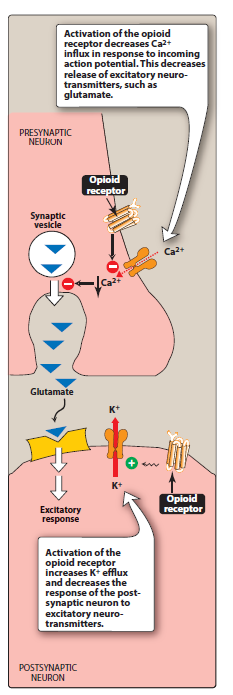
- Fentanyl is synthetic opioid agonist related to phenylpiperidine class. It is popularly used analgesic and anesthetic. Chemically, it is a monocarboxylic acid amide synthesized by condensation of propanoic acid with aryl amino group of N-phenyl-1- (2-phenyl-ethyl) piperidine-4- amine.
- It is highly potent than morphine and other opioids and is around 100 times potent than morphine.
- It was first synthesized by Janssen Pharmaceutica. The main aim behind synthesizing Fentanyl was to have opioid analgesics with enhanced analgesic activity and potency and less side effects compared with morphine or meperidine.
- It is one of the commonly misused and illegally used drugs.
Indications of fentanyl
- It is popular anesthetic adjuvant.
- Used in combination with local anesthetic to provide epidural analgesia in labor and postoperative pain.
- Used in breakthrough cancer pain (transmucosal route) and in chronic pain (transdermal patches). Transdermal patches should not be used to treat acute and postoperative pain.
Mechanism of action of fentanyl

Figure- Mechanism of action of Fentanyl (Source- Lippincott’s Illustrated Reviews)
- It is µ opioid receptor agonist and binds to µ opioid receptor in CNS and mimics the action of endogenous opiates.
- µ opioid receptor belongs to class of GPCR (G protein coupled receptor). Binding of fentanyl (ligand) activate this receptor and stimulate exchange of GTP with GDP on G- protein complex and inhibits adenylyl cyclase. This causes decrease in cAMP leading to decrease in calcium influx. The ctivation also leads to opening of K+ potassium channels.The decrease in calcium influx causes hyperpolarization and reduce neuronal excitation. This decreases perception of pain.
Pharmacokinetics of fentanyl
- Administered through various routes including IV, epidural, transmucosal, transdermal route. It is also available as nasal spray. It is highly lipophilic and has rapid onset of action.
- When administered through IV route, its peak analgesic effect is seen within 5 minutes. Its due to its high lipophilicity. Recovery from analgesic effect also occurs rapidly. So, it is administered in large doses or as prolonged infusion when its long-lasting effect is required.
- It is metabolized to inactive metabolite by CYP450 3A4 system. Elimination of drug and inactive metabolites occurs through urine.
Adverse effects
- Adverse effects are related to dose and effect- site concentration. The adverse effects occur due to their agonist effect on µ- opioid receptor.
- The most common side effect is respiratory depression. Patients receiving fentanyl for post- operative analgesia should be kept under continuous monitoring to detect and treat respiratory depression. Overdose may lead to severe respiratory depression. Naloxone can be used to reverse the respiratory depression.
- Other side effects include constipation, nausea, vomiting, sedation, bradycardia and skeletal muscle rigidity. The drug has potential to cause physical dependence and risk of addiction when administered repeatedly. Characteristic withdrawal syndrome occurs when its use is stopped. The symptoms include sweating, anxiety, diarrhea, abdominal cramps and goose flesh.
Drug Interactions
- When used in combination with heroine, cocaine, alcohol or other CNS depressants, can lead to serious interactions.
- Concurrent administration with drugs that inhibit CYP450 3A4 enzyme like macrolide antibiotics, protease inhibitors, can enhance the effect of fentanyl by inhibiting its metabolism.
Contraindications
- It is contraindicated in opioid naïve patients.
- In patients with respiratory depression or obstructive airway disease.
- In patients with liver disease.
- After operative interventions in the biliary tract as this may affect hepatic elimination of fentanyl.
- In patients with known hypersensitivity or intolerance to fentanyl or other opioids.
References
- Peng PWH, Sandler AN. A Review of the Use of Fentanyl Analgesia in the Management of Acute Pain in Adults. Anesthesiology. February 1999; 90: 576–599.
- Ziesenitz et al. Pharmacokinetics of fentanyl and its derivatives in children: a comprehensive review. Clin Pharmacokinet. 2018 Feb; 57(2): 125–149.
- https://www.emcdda.europa.eu/publications/drug-profiles/fentanyl_en
- https://www.ncbi.nlm.nih.gov/books/NBK459275/
- https://pubchem.ncbi.nlm.nih.gov/compound/Fentanyl#section=Depositor-Supplied-Synonyms
- https://www.drugabuse.gov/about-nida/legislative-activities/testimony-to-congress/2017/research-on-the-use-and-misuse-of-fentanyl-and-other-synthetic-opioids-
- Pharmacology and Pharmacotherapeutics. 24th edition.
- Goodman and Gillman Manual of Pharmacology and Therapeutics.
- Lippincott Illustrated Reviews Pharmacology, 6th edition.
- Essentials of Medical Pharmacology. 7th edition